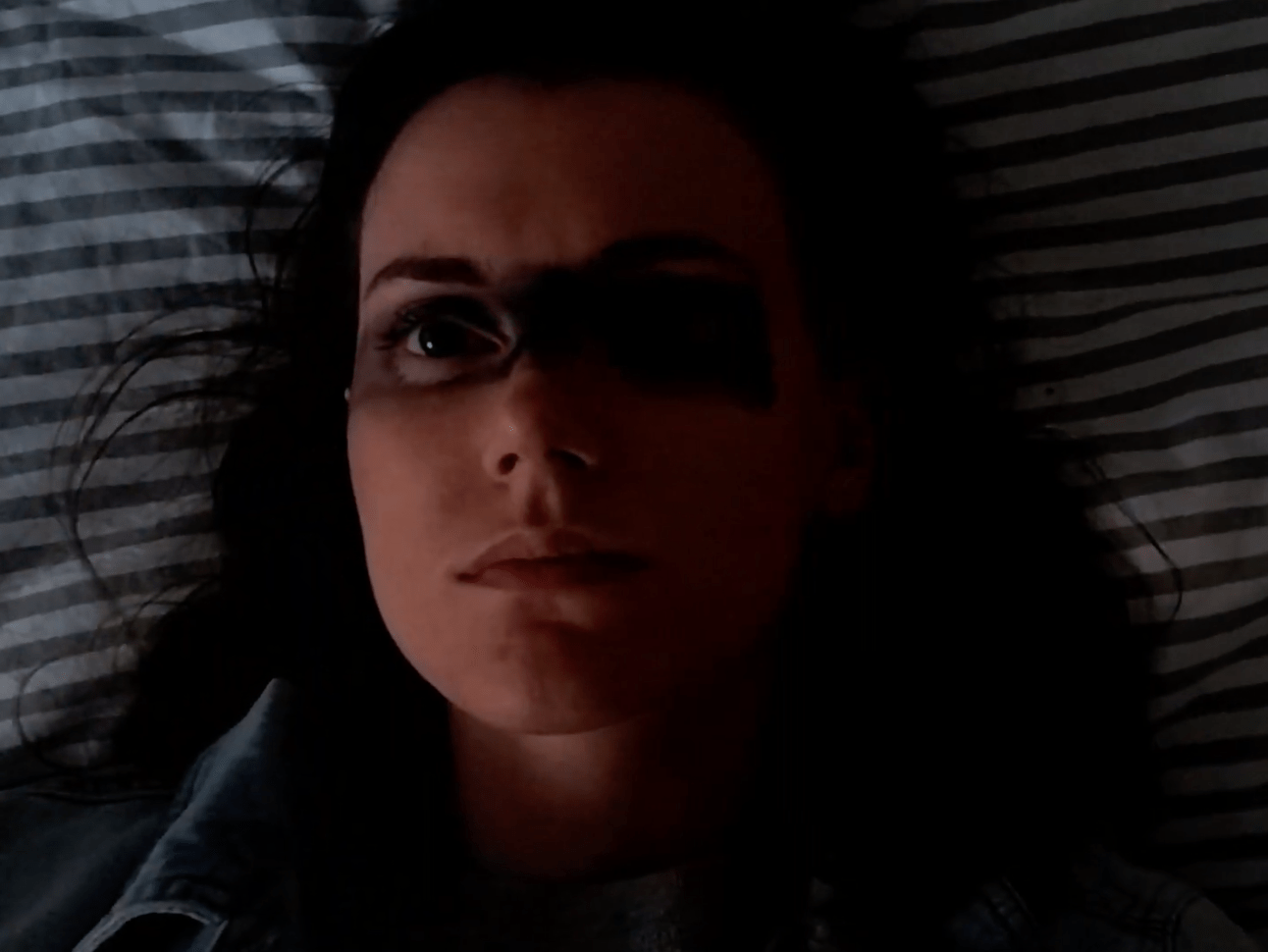In this project, I aimed to explore how bodies and identities are shaped by external forces that may be unconsciously learned and enforced. For this purpose, I decided to create a short film called Internalized that depicts a woman, played by myself, dealing with internalized homophobia.
Internalized: Reflections on Identity and Homophobia
The film shows the protagonist’s interactions with other versions of herself, one of which embodies that homophobia and serves to suppress any interest in same-sex romantic affection that the main character may try to express. This embodiment has a green mask that, borrowing from the color expressions in The Cook, The Thief, His Wife & Her Lover, indicates sentiments of disgust and anger that are always lingering around and watching her movements. Similarly, another persona that makes a brief appearance in the film is a friend who is concerned for the main character’s wellbeing. This caring persona does not have a distinct appearance or a mask as she most closely resembles the protagonist’s true identity.
The film has a few phases. First, the protagonist is herself and is curious about her sexual orientation as she feels drawn to same-sex individuals. However, when she gets reprimanded by her internalized homophobia, she decides to intentionally repress any homosexual feelings she may have, which is depicted as a dark gray mask. Although this is present in every activity she does, she eventually even forgets about it. Nonetheless, it still affects her well-being, which is when the caring persona warns her that there may be something wrong. The protagonist dismisses that at first, but then takes a closer look at herself and decides to erase that repression and acknowledge her feelings despite her internalized homophobia. She does this by facing her homophobia head-on and creating a rainbow mask for herself that outwardly expresses her true identity and feelings.
My main source of inspiration for this project was Sara Ahmed, who describes how the body is shaped by affects that circulate in the environment. She claims that affects belong to a hierarchy where “some emotions are ‘elevated’ as signs of cultivation, whilst others remain ‘lower’ as signs of weakness” (3). She also paraphrases another author who claims that evolution was partially caused by one’s ability to control which emotions should be expressed, as well as where and when. This serves as a setup for Ahmed’s argument that “emotionality … is clearly dependent on relations of power” (4). This has dire consequences as it can make powerful forces in a society, such as members of the government and the media, segregate certain groups as deserving or undeserving of legal rights and care based on the emotions they express and their perceived ability to control them. In the case in question, for decades homosexuality has been deemed as a lack of control and even moral standards by those who “chose that lifestyle.” That kind of intolerance has shaped the bodies and minds of those who find themselves attracted to same-sex individuals. An example of this effect can be seen in 120 BPM, where the AIDS epidemic was disregarded for a long time because it largely affected gay people, a group that seemingly deserved to be punished for their sinful identities and feelings. Although AIDS has also affected many other groups, people have long considered it to be a homosexuality-related disease as a girl expressed in the movie, “I’m no fag. I won’t catch your AIDS shit.” This demonstrates how the emotions expressed by society have shaped the bodies of gay people as they were disregarded and denied care.
Likewise, affects also shape the identities of people. Here, I draw from Audre Lorde’s “Eye to Eye” essay in Sister Outsider, where she expresses how the continuous pain caused by racism has caused her and others to step away from their own communities and distrust other Black people and themselves. She explains how the pain of each racist event is embodied, but often unexamined, which transforms that pain into a long-lasting suffering (Lorde 172). Likewise, although the blatant homophobia seen in 120 BPM has decreased in some countries and Western media overall, gay people still encounter homophobia in their daily lives, which is similarly painful. This pain, if unexamined, also becomes suffering as homophobia becomes internalized and people learn to distrust or even condemn their own feelings and bodies as depicted in Internalized. And, although my film has a happy ending, these complex affects are difficult to deal with in real life. As Lorde states, “pain is an event, an experience that must be recognized, named, and then used in some way in order for the experience to change, to be transformed into something else, strength or knowledge or action” (171). Thus, despite the possibility of transforming the pain into something meaningful and even useful, people must let themselves feel and name that pain, which is a painful process in itself. However, so is living with the denial of one’s true identity. As portrayed in my short film, this suffering, even when unconscious, still impacts people’s wellbeing, mental health, and ability to be truly happy.
